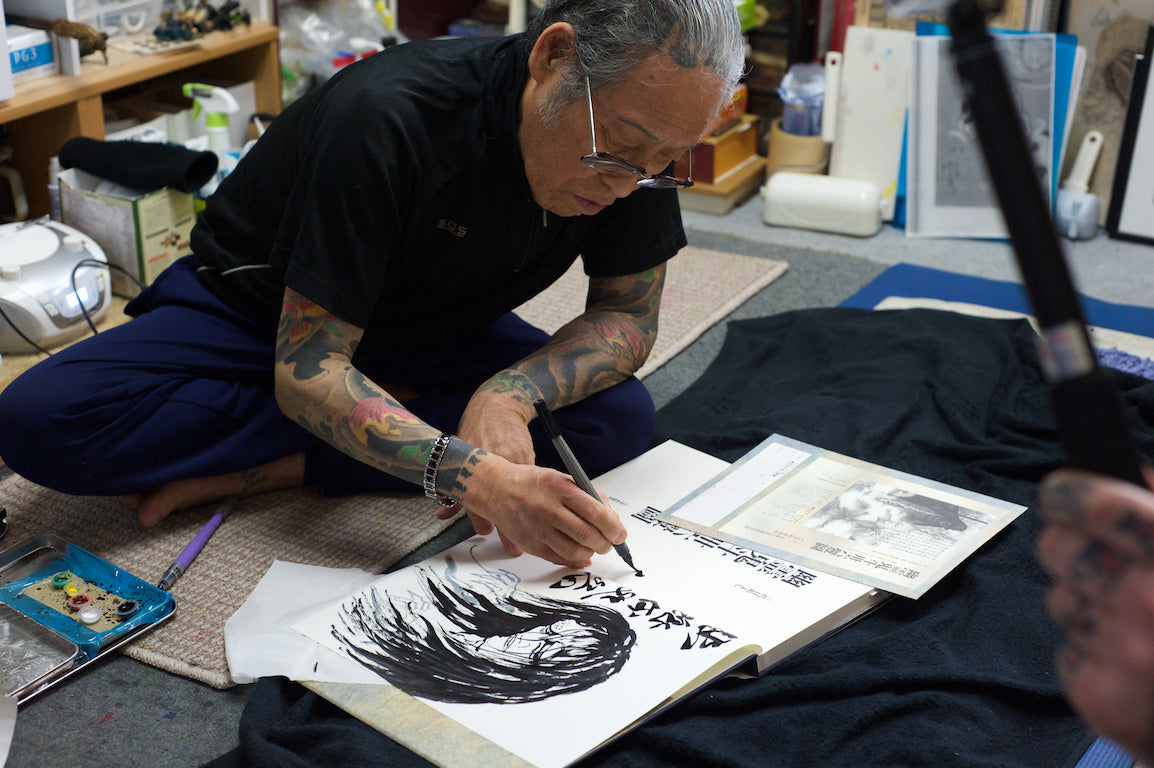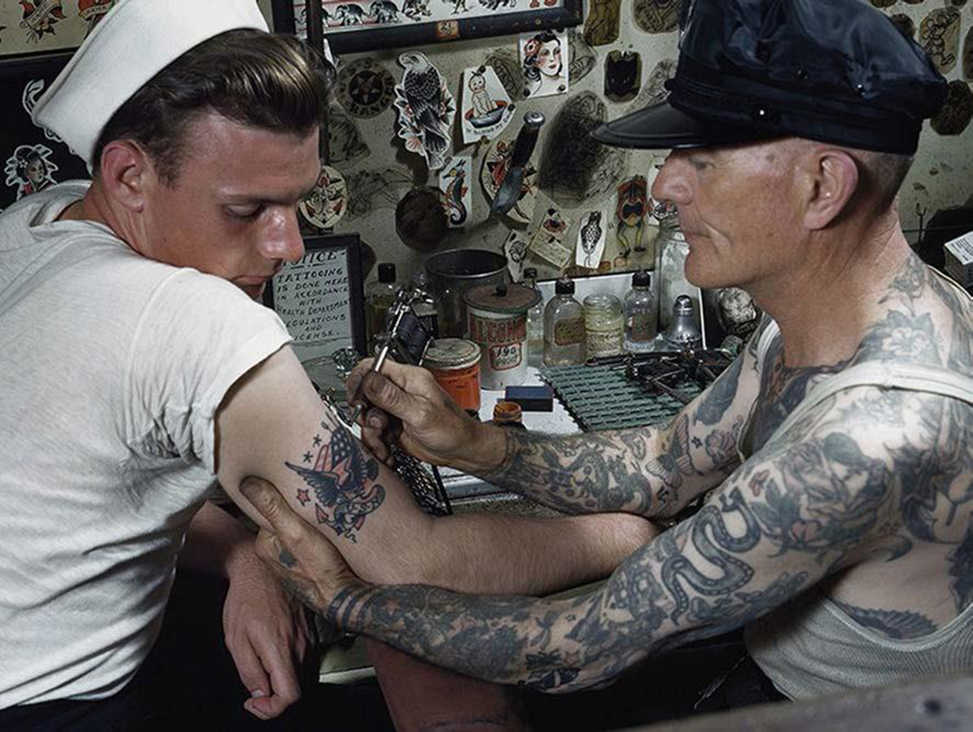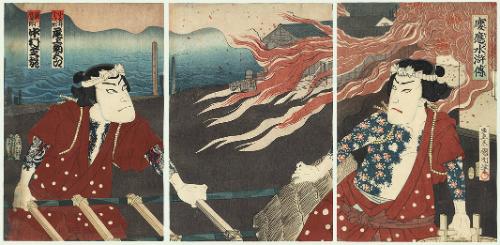Following the sell-out success of our collaboration with tattoo legend Horiyoshi III – Scrolls, we’re releasing a follow-up miniature version Scrolls Junior. And in anticipation of the release of Scrolls Junior, we wanted to take a look at the man, the myth, the legend that is Horiyoshi III.

So let’s wind back the clock…
The birth of a Legend
The year is 1958, and a young body stands transfixed. You can hear the gentle sounds of waves lapping against the edges of the baths as steam fills the air. A man emerges from the bath in front of him.
The man is a member of the Yakuza.
You wouldn’t need to know him to know this. His tattoos speak volumes. Especially in 1958, Japan, just ten years after tattooing became legal. Despite their newfound legality, tattoos are still weighed down by a history of stigma, but the stigma is justified in this case. His tattoos tell you that he is a member of the criminal class.
He is covered from head to toe in tattoos. Stopping just above the ankles and wrists, with a line of uninked skin running from the neck down to his waist to allow him to wear a kimono without revealing his criminal affiliations. But here in the bathhouse, there is no hiding them, and unbeknownst to the man, this encounter is to have a formative effect on the young man and birth one of Japan’s greatest tattoo artists.

This moment in the young boy’s life is the spark that would shape more than 50 years of his life.
Tattoos in Japan
Japan has a tumultuous history with tattoos.
While Japanese tattoos are revered worldwide for their beauty and scale, their reputation closer to home is anything but cozy. They’ve often been worn by criminals outsider groups or used by the ruling classes to write a criminal’s crime on their skin.

The link between tattooing and criminals is long and strong. And while tattoos history in Japan hasn’t been entirely criminal, the association is incredibly strong and carries a heavy weight.
This negative stigma was so strong that Japan banned tattoos outright at the beginning of the Meiji period (circa. 1868). This coincided with Japan’s borders opening to foreign trade and visitors. The Japanese government was so worried about the negative connotations associated with tattooing that they didn’t want to take any chances. Ironically this was the first time most Westerners experienced Japanese tattooing.
This ban was lifted in 1948 under US occupation. But the perception of tattoos in Japan was well and truly solidified.
Needless to say, seeing a man covered from neck-to-ankle in tattoos was not a normal sight and had a tremendous impact on the young Horiyoshi III.
See our article Tattoos used to be dangerous to see the places you can still get into trouble for tattooing.
The young apprentice
Yoshihito Nakano, as he was then known, apprenticed himself to Shodai Horiyoshi of Yokohama, Horiyoshi I, at the age of 25. After receiving his tattoos from Horiyoshi II, Horiyoshi I’s son, he was later granted the honorific Horiyoshi III from his master.
During his apprenticeship, he found it difficult to learn to tattoo. His master wouldn’t tell him anything, and the only way to gain knowledge about the practice of tattooing was by reading books. Later in 1985, he started traveling, despite a lack of interest in traveling, and met several influential American tattoo artists who had a big impact on his development as an artist.
“I wouldn’t be who I am without Ed hardy. I feel the same about Bob Roberts.”
Source: Gypsy Gentleman
Meeting Ed Hardy had a big impact on Horiyoshi III. Hardy had such a detailed knowledge of Eastern Culture that Horiyoshi felt ashamed that a foreigner knew so much more about his own culture. This inspired Horiyoshi III to get deeper into the art of Japanese tattooing, and he started going to the library every day and engrossed himself in all things tattooing.
To the present day
Horiyoshi III has continued to develop his craft as a tattoo artist and has had an outsized influence on the perception of Japanese tattooing. His tattoos and legacy are documented in several books and countless interviews. And in 2000, he founded the Yokohama Tattoo Museum, which houses his personal collection of Japanese tattooing memorabilia.

Reflecting on Japan’s changing attitude to tattooing, he said: “About 40 years ago, most of my clients were ‘yakuza,’ construction workers and some nightclub workers. The laws against yakuza have been getting stricter, so there are fewer yakuza now. My clients are more regular people who just like tattoos. I also have many foreign clients nowadays.”
Nowadays, Horiyoshi III continues to tattoo but now only working on finishing existing clients’ bodysuits. Alongside his tattoo work, he has become a prolific silk scroll painter, his scrolls fetching upwards of sixteen thousand dollars.

–
For 45 of his original scroll paintings, all in one convenient format, check out Scrolls Junior. It is small enough to use as a reference book on a plane or train while still being packed with all the detail of the original Scrolls book.
Pre-order before 1 Feb to make sure you secure your copy of this limited edition piece of Japanese tattooing history.




Leave a comment
This site is protected by hCaptcha and the hCaptcha Privacy Policy and Terms of Service apply.